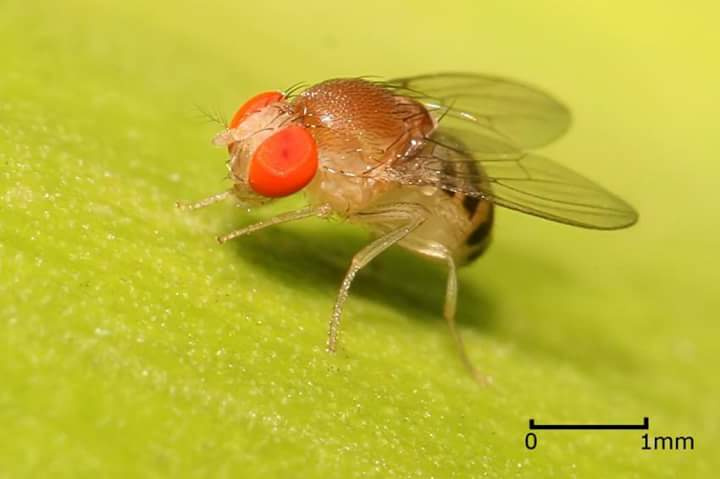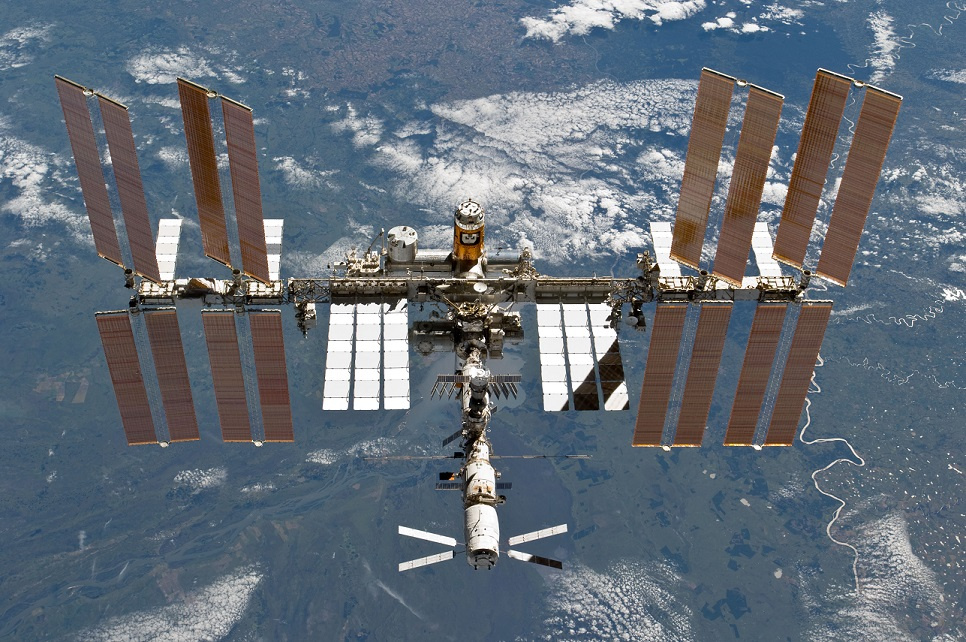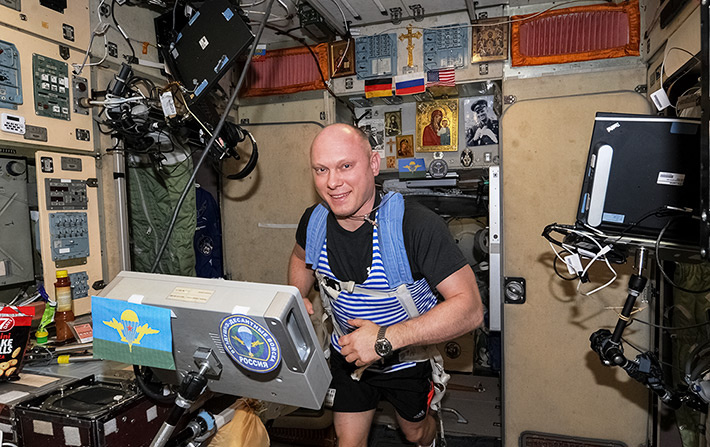So, on June 3, 2017, from the Launch Complex 39A (LC-39A) platform at the Kennedy Space Center (NASA), the Falcon 9 launch vehicle sent a cargo ship Dragon to the orbit, including various equipment for carrying out scientific experiments. The first stage of the launch vehicle has already landed on Landing Zone 1 at Cape Canaveral, which is 15 kilometers from the launch site, while the truck itself is still on its way to the ISS (the Dragon arrival is scheduled for June 5). In the meantime, we will discuss the objectives of the provided CRS-11 experiments.
Launch and landing of Falcon RN 9, June 3, 2017So, during the mission of CRS-11 in the airtight compartment of the Dragon truck 1665 kg of cargo were sent, including 1069 kg of equipment and materials for scientific research. Immediately make a reservation that I will consider mainly those projects that:
- May affect medicine or civilian sectors in the near future;
- Understand the author of the article.
Therefore, first experiments related to CRS-11 will be briefly described at the beginning of the article, and at the end there will be a detailed analysis of some of them.
The emblem of the mission CRS-11.- The Roll-Out Solar Array (ROSA) is an experiment in deploying and using flexible solar cells in orbit.
- The Neutron Star Interior Composition Explored (NICER) is a scientific equipment that will be installed on the outside of the ISS. It is intended to study the nature, structure and processes occurring in pulsars. Also, the goal of this project is to develop a space navigation system on a solar system scale for which pulsars will act as landmarks (Station Explorer for X-ray Timing and Navigation Technology (SEXTANT)).
- The Systemic Therapy of NELL-1 for osteoporosis (Rodent Research-5) - testing of osteoporosis medicine in mice. Osteoporosis is an important medical problem on both Earth and the ISS.
- The Fruit Fly Lab-02 - paradoxically sounds, the purpose of this study is to study the effect of long-term space flights on the cardiovascular system using fruit flies (fruit fly, fruit fly, Drosophila melanogaster ) as experimental animals. I will write about this in more detail later, the topic is very interesting.

The fruit fly Drosophila ( Drosophila melanogaster ) is a tiny insect, destined to serve as molecular biologists to research almost everything from genetic mechanisms of embryo development to systems that protect cells from radiation.
- The Multiple User System for Earth Sensing (MUSES) facility is a device for photographing the Earth in various ranges of digital cameras and other studies of our planet, developed by Teledyne Brown Engineering (Huntville, Ala., USA). It can be used for a wide range of tasks: agricultural research, ocean and sea research, air quality control, early detection of forest fires and geological exploration.
We now proceed to consider several projects in a more detailed manner.
1) The Roll-Out Solar Array (ROSA)
Let's start with a
very, very promising project in the field of power supply of satellites, probes and habitable stations. The purpose of this experiment is to test a new type of solar cells for spacecraft, developed in cooperation with the state research organization Air Force Research Laboratory (Hanscom USA Air Force Base) (Massachusetts, USA) and the private company Deployable Space Systems, Inc. (Goleta, California, USA).
The main goal of this experiment is a comprehensive study of the characteristics of solar cells made of flexible but effective materials in this field. This work is crucial for the future of commercial space research and space research, and here's why.
 As we can see, a very large area of solar batteries is used to supply the ISS (2011 photo).
As we can see, a very large area of solar batteries is used to supply the ISS (2011 photo).First of all, it is much easier to put light solar batteries in orbit as part of a ready-made satellite or probe into some kind of “rolls” and into it. In fact, in the future, this technology (if successful) can allow the future spacecraft to deliver a fundamentally new level of power supply from solar panels. This, in turn, opens up the possibility to increase the total power of satellite equipment of all types (telecommunications, communications, scientific experiments, probing the Earth and other objects, etc.), this will be especially useful when it comes to small devices. .
Specific impulses (MD) of various types of engines. As can be seen from the table, the UI of electric, plasma and ion engines is much higher than that of liquid or solid propellant engines, which means that when used on a spacecraft (if it is generally appropriate), the fuel will be spent much more efficiently. For the picture, thanks to the wikipedia article .In addition, electrical energy can be used in propulsion systems to adjust orbits and it is worth recalling that although such propulsion systems do not have an impressive level of thrust (~ 5 Newtons is a very high load), the specific impulses of electric, ion and plasma engines are much higher than have chemical, and their on / off programs are much more flexible, which makes them very, very useful.
Asteroid Itokava. The picture was taken by the Japanese Hayabus probe.Maybe the above-mentioned level of thrust seemed to someone a toy, but in vain. For example, the Japanese probe
“Hayabusa” (translated from the Japanese “peregrine falcon”, mass 510 kg), which studied the
Itokawa asteroid and successfully delivered samples of its rock on board in 2010, had an ion engine as a sustainer on board. In addition, this probe also carried out a “landing” on this asteroid of the small Minerva robot (the mass was only 519 grams, the landing ended in failure, presumably the robot flew into open space). However, equipped with three cameras and solar panels "Minerva" also clearly would be useful light and powerful solar panels. In general, a technology niche from the ROSA project clearly exists.
At first, the methods of packing / unpacking in space will be tested, and then comprehensive tests of energy efficiency of the technologies incorporated in the product and comparison of the experimental data with theoretically predicted characteristics obtained in laboratories on Earth will be carried out.
2) Medical project in the field of systemic therapy for bone loss.
The experience of space flight has shown that prolonged stay in conditions of weightlessness, and consequently reduction of loads on muscles and bones, leads to degradation of bone tissue (osteoporosis) both in humans and in animals (excessive physical activity can also lead to it, for example). , tobacco smoking, alcoholism and coffee abuse. For a complete list of risk factors, see the wikipedia article (link to which is in the spoiler below).
What is osteoporosisOsteoporosis (Latin osteoporosis) is a chronically progressive systemic, metabolic skeletal disease or clinical syndrome that manifests itself in other diseases, which is characterized by a decrease in bone density, a violation of their microarchitecture and increased fragility due to a metabolic disorder of bone tissue with a predominance of catabolism over bone formation processes, a decrease in strength bones and increased fracture risk.
Wikipedia Today's therapy methods are mainly a set of exercises to keep the body in good shape and are aimed at preventing the development of new negative effects, however, this approach does not allow repairing the damage already received earlier. At the same time, not only cosmonauts on the ISS suffer from this problem, but also millions of people on Earth, and many of them have osteoporosis also caused by low mobility, for example, due to the need to stay in a hospital bed or in a wheelchair for a long time. Osteoporosis is also often associated with impaired biochemical processes in the body, unbalanced diet, or bad habits (therefore, this drug is tested on Earth too).
 Cosmonaut Oleg Artemyev performs morning exercises in a vest on the occasion of the Airborne Forces Day (August 2, 2014, ISS). Photo: artemjew.ru
Cosmonaut Oleg Artemyev performs morning exercises in a vest on the occasion of the Airborne Forces Day (August 2, 2014, ISS). Photo: artemjew.ruSo, the
drug tested during the experiment called
“Systemic Therapy of NELL-1 for Osteoporosis (Rodent Research-5 (RR-5))” can not only prevent or reduce the negative effects of mice staying in weightlessness (and the experiment is conducted on mice) , but in varying degrees, reverse their osteoporosis. In general, if astronauts on the ISS succeed in getting good results, it will bring doctors closer to solving an important therapeutic task, and space agencies will have something to offer their wards during long missions.
These are the goals of the current scientific experiments, which the Dragon truck, launched on June 3, 2017 during the CRS-11 mission, has to hand to. Well, the rocket worked out normally, we can only wish the staff a safe docking with the ISS, and the cosmonauts - to conduct all the planned research and get useful results for humanity.